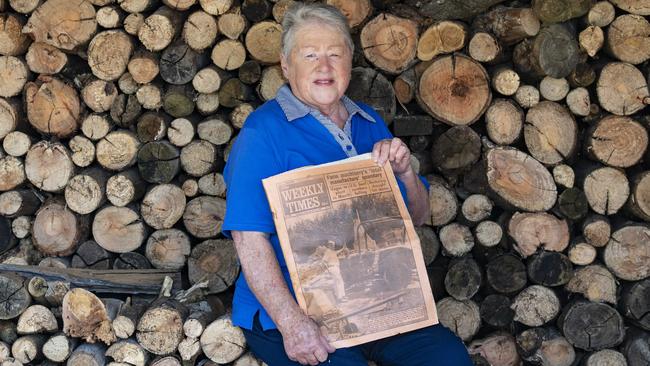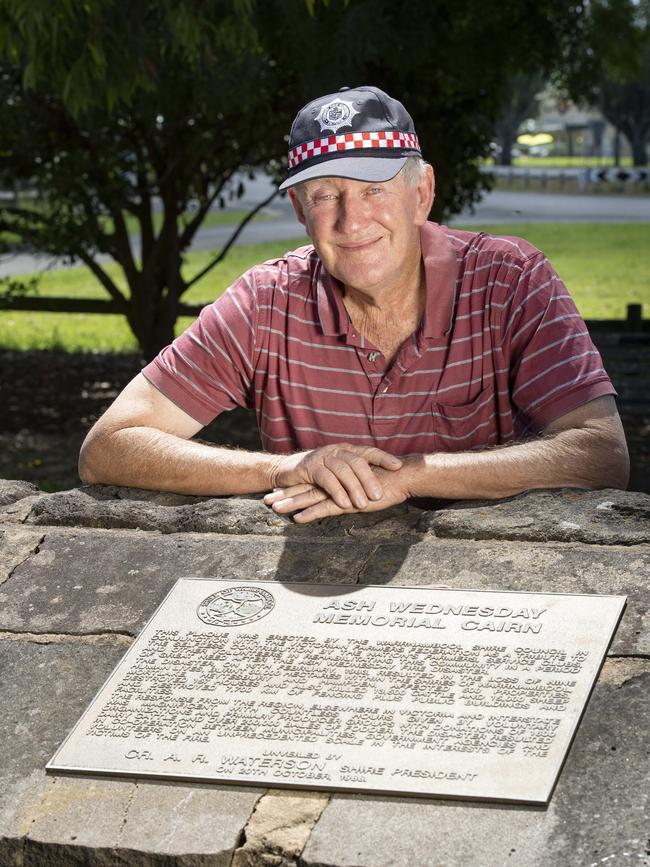Ash Wednesday bushfires: Victoria remembers the 1983 tragedy
Memories of Ash Wednesday are still seared in the memory of those who faced it, four decades on from the 1983 horror bushfires.
As the years march on, the memories remain strong for the thousands across southeastern Australia who found themselves in the line of fire on February 16, 1983.
It’s the whoosh of air being sucked out of the atmosphere by a raging inferno; the wail of emergency service sirens; the crackle of charcoaled remains days after the blaze.
This Thursday marks four decades since southwest Victorian farmers Margaret and Brian Parsons were among those whose lives were up-ended by the Ash Wednesday fires.
Brian appeared on the front page of The Weekly Times in the edition after the fires, surveying what remained of his property.
Margaret is still around to tell their story 40 years on and the images of that wild Wednesday are vivid.
“Anyone who is old enough remembers Ash Wednesday,” she said. “Who could forget?”
“I remember reports of fires that morning but it wasn’t until the afternoon and into the evening that the real danger occurred.”

More than 2000 homes were destroyed in the blazes and 72 lives lost across southeast Australia.
In southwest Victoria alone, two fires scorched 60,000 hectares in the districts between Warrnambool and Terang. Nine people died, 157 houses burned and thousands of sheep and cattle were lost.
Veteran firefighter Owen O’Keefe was part of the frontline response, working with other CFA members in temperatures exceeding 43 degrees. At the time, it was Victoria’s hottest day on record.
“There was a drought in 1982 so by early 1983, things were very dry not just in the Western District but right across southeastern Australia,” Mr O’Keefe said.
“The fires at Cudgee and Ballangeich linked up mid-afternoon and a westerly wind change just changed the game completely. It went from being a small, narrow fire to an enormous firefront. Just swept everything in its path.”
The wind change hit Mount Gambier first then the Warrnambool region fires, changing what was a bad fire day into something truly catastrophic.
The deadly westerly swept across the Otways, while Melbourne was shrouded in smoke — fires had ignited at Mount Macedon, Cockatoo and Belgrave. The evening was a nervous one for those living at the suburban edge.
“The trucks and equipment we had at the time were basic compared to today, minutes seemed like hours,” Mr O’Keefe said.

For months, the Parsons and other farmers slept on neighbours’ floors and worked with friends as well as complete strangers who volunteered to help with rebuilding efforts.
“The was a real community spirit in the time after Ash Wednesday,” Mrs Parsons said.
Technological advances in communication are arguably the most significant development for firefighting since 1983, Mr O’Keefe says.
When Black Saturday darkened the calendar of February 2009, most Australians had a mobile phone in their pocket.
By the 2019-20 Black Summer fires, those phones were internet enabled, with sources from the CFA website to Twitter and Instagram allowing for updates in seconds.
“That’s one of the biggest changes: communications,” Mr O’Keefe said. “It’s easy to forget how basic communications were in 1983.
“I remember in the days after the fires, the phone lines were cut off and Telecom had to come in and put a temporary line along the Princes Highway with receivers out in the open along the fencelines.”

Communication technology may have come away since 1983, but it was a very 2020s tech glitch that recently brought Ash Wednesday back into focus for Mrs Parsons.
“We’re near the Great Ocean Road and you get a lot of tourists travelling through,” she said.
“One day, we had a visitor get lost due to Google maps. He said ‘this must be a wealthy part of Australia because all the houses are reasonably new.
“He wasn’t aware of Ash Wednesday. I said: ‘They’re not new by choice, we had to rebuild’.”





